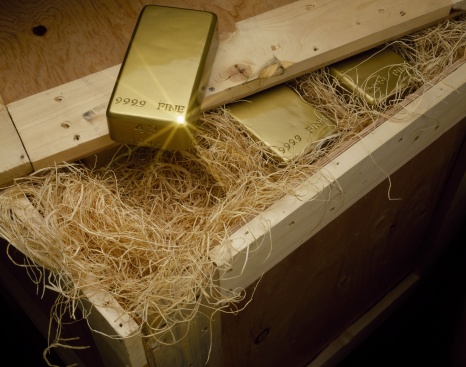Commodities & Metals
Are Lower Gold ETF Outflows Helping to Mark a Bottom in Gold?
Published:
Last Updated:
Each quarterly report on demand trends from the World Gold Council (WGC) shines a different light on aspects of gold. While the overall report shows lower demand and lower supplies for gold in the second quarter of 2015, there may be some good news on the investing front, as far as exchange traded fund (ETF) investors are concerned. It seems as though the outflows from these ETFs have slowed to a crawl.
Investors and gold bugs alike must know that the WGC is generally going to be positive on gold. The team pointed out that China and India were responsible for half of the weakening gold trends, and they also pointed out that overall prospects for the remainder of the year are more encouraging for gold — with consumers responding to the recent price drop.
That being said, the only real good news we see in the report is that outflows in ETFs seem to be coming to an end. This should be good news for the likes of SPDR Gold Shares (NYSEMKT: GLD) and iShares Gold Trust (NYSEMKT: IAU). Still, from the view of 24/7 Wall St., trying to call an exact bottom in gold or any other major benchmark or commodity, is nearly impossible to do. There are just too many macro forces at work globally, and the driving force changes in markets quickly.
ALSO READ: Why Technology and Industry Keep Using Less and Less Gold
The WGC showed that the “investment outflows,” where losses were mainly seen was concentrated in the bar and coin segment. Demand for these products fell by 15% year over year. Outflows from gold-backed ETFs were smaller in size than in the second quarter of 2014, with fewer than 23 tons leaving these trusts. Those outflows were shown to have had only a very limited impact on the gold market in the second quarter.
Where this gets even better is that the net flows for all ETF type products was effectively zero in the first half. That is down from outflows of 51.6 tons in the first half of 2014. It seems like a gold mine, well sort of, compared to the outflows reaching a massive 612.1 tons in the first half of 2013.
Gold bar and demand was down by 13% in the second quarter to 453.5 tons. Where things get tricky to analyze, and to predict ahead, is where things are going in the third quarter and rest of the year. Greece seems more rectified, but China’s woes may only just be starting. The WGC said:
The opening weeks of the third quarter have seen dramatic moves in the gold price, all the more so for the fact that the price was range bound during the second quarter. We have published notes which comment in detail on this fall and explain why the above factors do not necessarily reflect the overall investment case for gold, or threaten the prospects for long-term gold investment. ETF outflows have increased since the end of June, but the pace of these flows remains below the levels seen in the previous two years.
ALSO READ: Only 5 Central Banks Still Buying Gold
The SPDR Gold Shares website shows that it currently has some 671.87 tons held. This translates to some 21.6 million ounces of gold, worth $24.1 billion. Back in September of 2012, the same SPDR Gold Shares trust had 41.2 million ounces, effectively double. Gold is now $1,115 or so in spot trading, versus around $1,700 per ounce back then.
SPDR Gold Shares has a price of $107.00 that generates that $24.1 billion in market value, and that price compares to a 52-week trading range of $103.43 to $126.53. It challenged $178 or so when gold was challenging the $1,900 per ounce level.
iShares Gold Trust has a market value of almost $5.8 billion today. Its $10.78 share price compares to a 52-week range of $10.43 to $12.74. It peaked at almost $18.00 when gold itself was briefly challenging $1,900 per ounce.
While the WGC may have some positive signs, many of the outside pressure just have not been lending a hand toward gold. Whether that changes any time soon remains to be seen.
Again, the take of 24/7 Wall St. is that trying to predict a bottom in a major market is nearly impossible. Most investors who fish for a bottom do so over the course of weeks, months or even longer.
ALSO READ: Why Gold May Withstand Higher Interest Rates and a Strong Dollar
After two decades of reviewing financial products I haven’t seen anything like this. Credit card companies are at war, handing out free rewards and benefits to win the best customers.
A good cash back card can be worth thousands of dollars a year in free money, not to mention other perks like travel, insurance, and access to fancy lounges.
Our top pick today pays up to 5% cash back, a $200 bonus on top, and $0 annual fee. Click here to apply before they stop offering rewards this generous.
Flywheel Publishing has partnered with CardRatings for our coverage of credit card products. Flywheel Publishing and CardRatings may receive a commission from card issuers.
Thank you for reading! Have some feedback for us?
Contact the 24/7 Wall St. editorial team.